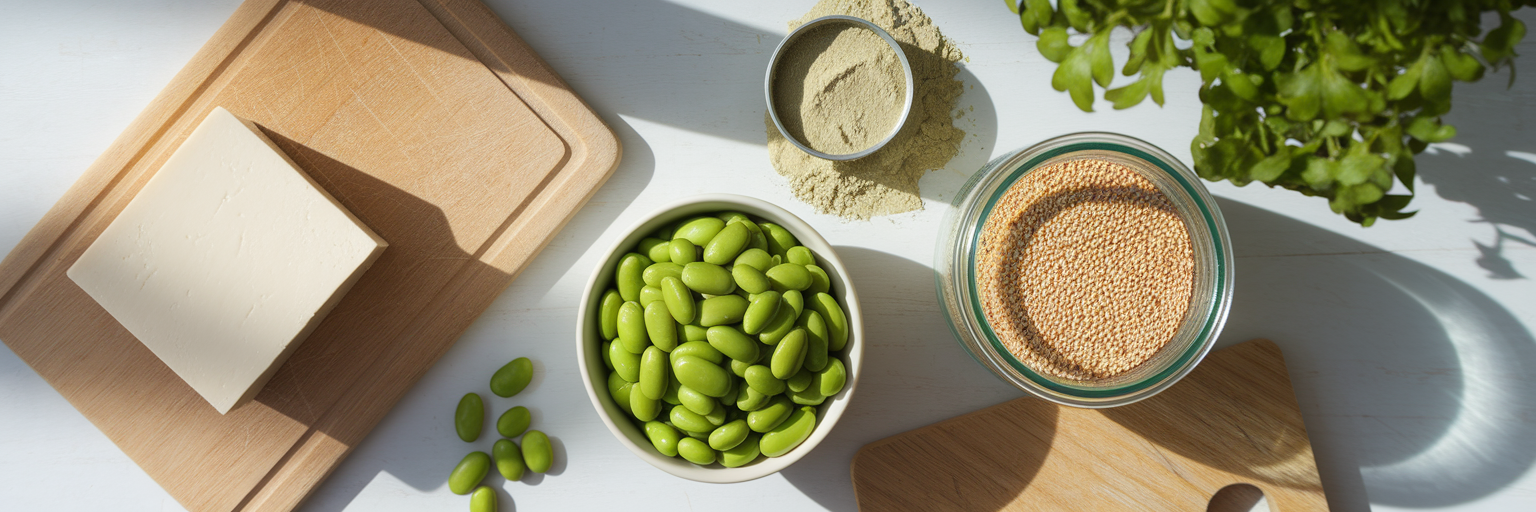Why Your Muscles Ache After a Great Workout
We all know that feeling. It’s the day after a really satisfying workout, and every step, stretch, and laugh reminds you of the hard work you put in. That familiar ache, known as Delayed Onset Muscle Soreness (DOMS), isn't a sign that you did something wrong. In fact, it’s a signal of progress. It tells you that you challenged your body enough to start getting stronger.
So, what’s actually happening inside your muscles? During intense exercise, you create microscopic tears in your muscle fibers. This might sound alarming, but it’s a completely normal and necessary part of the muscle-building process. Your body’s natural response is to repair these tiny tears, and when it does, it rebuilds them thicker and stronger than before.
Think of your muscles as a building that just underwent a renovation. To make it stronger, you need an expert construction crew to come in and handle the repairs. In your body, protein is that crew. The amino acids in protein are the raw materials used to patch up the damage and reinforce the structure. This is why what you eat after a workout is so important. The right nutrition choices can significantly speed up this repair process, helping you feel better faster and see better results. Making smart choices can help you reduce muscle soreness with diet and get you ready for your next session.
The Science Behind Plant-Based Muscle Repair

For years, there’s been a persistent myth that only animal-based proteins could effectively build and repair muscle. But modern science tells a different story, confirming that a well-planned approach to vegan protein for muscle recovery is incredibly effective. In fact, a 2025 study published in PubMed demonstrated that over time, there were no significant differences in muscle protein synthesis between participants on vegan and omnivorous diets.
The magic behind muscle repair comes down to amino acids, which are the building blocks of protein. One of the most important is leucine. Think of leucine in plant based protein as the "on switch" that signals your body to start the muscle repair process, known as muscle protein synthesis (MPS). While it’s true that some individual plant sources might have less leucine than whey, this is easily solved by combining different plant proteins. For example, blending pea protein (which is high in leucine) with rice protein (which is rich in other essential amino acids) creates a complete and powerful profile. This is why looking at the best protein powders we've reviewed often reveals these smart, synergistic blends.
This isn't just a theory. A systematic review from Nutrition Reviews concluded that plant proteins support the maintenance of muscle mass just as effectively as animal proteins when consumed in adequate amounts. This is empowering news for anyone, whether you're fully plant-based or just looking to incorporate more plant-powered meals into your routine. You don't have to compromise on your fitness goals to eat more plants.
Timing Your Vegan Protein for Maximum Impact
You’ve finished your workout, and your muscles are primed for repair. Now what? The timing of your nutrition can make a real difference. You may have heard of the "anabolic window," which sounds a bit intense, but it’s really just a golden hour or two after exercise when your muscles are most receptive to nutrients. During this period, your body is working hard to replenish its energy stores and kickstart the recovery process.
To take advantage of this, a great rule of thumb is to consume 20 to 30 grams of high-quality plant based protein after workout sessions, ideally within 30 minutes to two hours. This gives your muscles the immediate resources they need to begin rebuilding. The key is to make it convenient, so it becomes a consistent habit rather than a chore. You don't need to prepare a complicated meal. Simple and quick options work perfectly.
Here are a few easy ideas to get that protein in right on time:
- A pre-mixed protein shake: The fastest and easiest option, perfect for when you're on the go.
- A quick tofu scramble: If you're at home, a simple scramble takes just a few minutes to whip up.
- A hearty bowl of lentil soup: A fantastic choice that provides both protein and replenishing carbohydrates.
If you need some inspiration, you can check out these 3 easy vegan protein recipes you'll actually crave that are perfect for a post-workout meal. Finding a routine that works for you is what matters most.
Top Plant-Based Protein Sources for Athletes

When it comes to choosing the best vegan protein sources, you have more options than ever. From convenient powders to nutrient-dense whole foods, building a powerful, plant-based recovery plan is straightforward. The key is to focus on variety to ensure you’re getting a wide range of amino acids and other essential nutrients.
Protein Powders and Blends
Vegan protein powders are an excellent way to get a concentrated dose of protein right after a workout. Modern formulas are designed for optimal absorption and effectiveness.
- Pea Protein: Rich in branched-chain amino acids (BCAAs), which are crucial for recovery.
- Soy Protein: A complete protein, meaning it contains all nine essential amino acids.
- Brown Rice Protein: A great hypoallergenic option that pairs well with pea protein.
- Hemp Protein: Contains healthy fats and fiber in addition to protein.
A well-formulated powder, like our Chocolate Vegan Protein, takes the guesswork out of combining sources by providing a complete amino acid profile in one convenient scoop.
Whole-Food Protein Powerhouses
Supplements are great, but a well-rounded diet is the foundation of any solid fitness plan. Incorporating whole-food protein sources ensures you get fiber, vitamins, and minerals too.
| Protein Source | Key Benefit | Approx. Protein per Serving |
|---|---|---|
| Pea Protein Powder | Rich in BCAAs for muscle repair | 20-25g per scoop |
| Soy (Firm Tofu) | Complete amino acid profile | 20g per cup |
| Lentils | High in fiber and protein | 18g per cooked cup |
| Hemp Protein | Contains healthy fats and fiber | 15-20g per scoop |
| Quinoa | Complete protein with complex carbs | 8g per cooked cup |
Note: Protein content can vary based on brand and preparation method. This table provides a general guide for incorporating these foods into your recovery plan.
Building a Complete Vegan Recovery Plan
While protein is a star player in muscle recovery, it doesn’t work alone. A truly effective recovery strategy is holistic, incorporating other key nutrients and habits that support your body’s repair processes. Think of it as assembling a full support team for your muscles, not just sending in one specialist.
Here are the essential components of a complete vegan recovery plan:
- Pair Protein with Carbs: Carbohydrates are your body's primary fuel source. After a workout, your muscle glycogen (energy stores) is depleted. Consuming carbs alongside your protein helps replenish these stores quickly and can even assist in transporting amino acids to your muscles more efficiently. A banana, a handful of dates, or a slice of whole-grain toast are great additions to your post-workout snack.
- Hydrate, Hydrate, Hydrate: Water is fundamental for nearly every bodily function, including nutrient transport and waste removal. Dehydration can hinder recovery and performance, so be sure to drink plenty of water throughout the day, especially after sweating.
- Embrace Anti-Inflammatory Foods: Exercise naturally causes some inflammation, which is part of the repair process. However, you can support a healthy inflammatory response by eating antioxidant-rich foods. Berries, leafy greens like spinach, and spices like turmeric are packed with compounds that help your body manage inflammation naturally.
A simple recovery smoothie is a perfect way to combine all these elements. Try blending a scoop of vegan protein with a banana, a handful of spinach, and some frozen berries. It’s a delicious and efficient way to give your body everything it needs. For more tips on optimizing your health and fitness journey, feel free to explore our blog.
Common Questions About Vegan Protein Answered

Switching up your protein source can bring up some questions. Let's clear up a couple of the most common ones to help you feel confident in your choices.
Q: Will I lose muscle if I switch to a vegan diet?
A: This is a persistent myth, but the science is clear: absolutely not. As long as you consume enough calories and a variety of protein sources, your muscles will have everything they need to grow and stay strong. In fact, research reported by Science Daily in 2025 found no significant differences in muscle strength or hypertrophy between athletes on well-planned vegan and omnivorous diets.
Q: But aren't plant proteins "incomplete"?
A: This is a common misunderstanding. The term "incomplete" simply means a single food source doesn't contain all nine essential amino acids in high amounts. However, your body is smart. It creates a "pool" of amino acids from all the different foods you eat throughout the day. By eating a variety of plant foods like legumes, grains, nuts, and seeds, you can easily get all the amino acids you need. The key is variety, not perfection in every single meal.
The choice of protein is personal, but it's great to know that a plant-based approach is a powerful and effective route to achieving your fitness goals. Ready to find the perfect fit for your routine? Explore our full collection of plant-based supplements and see what works for you.



